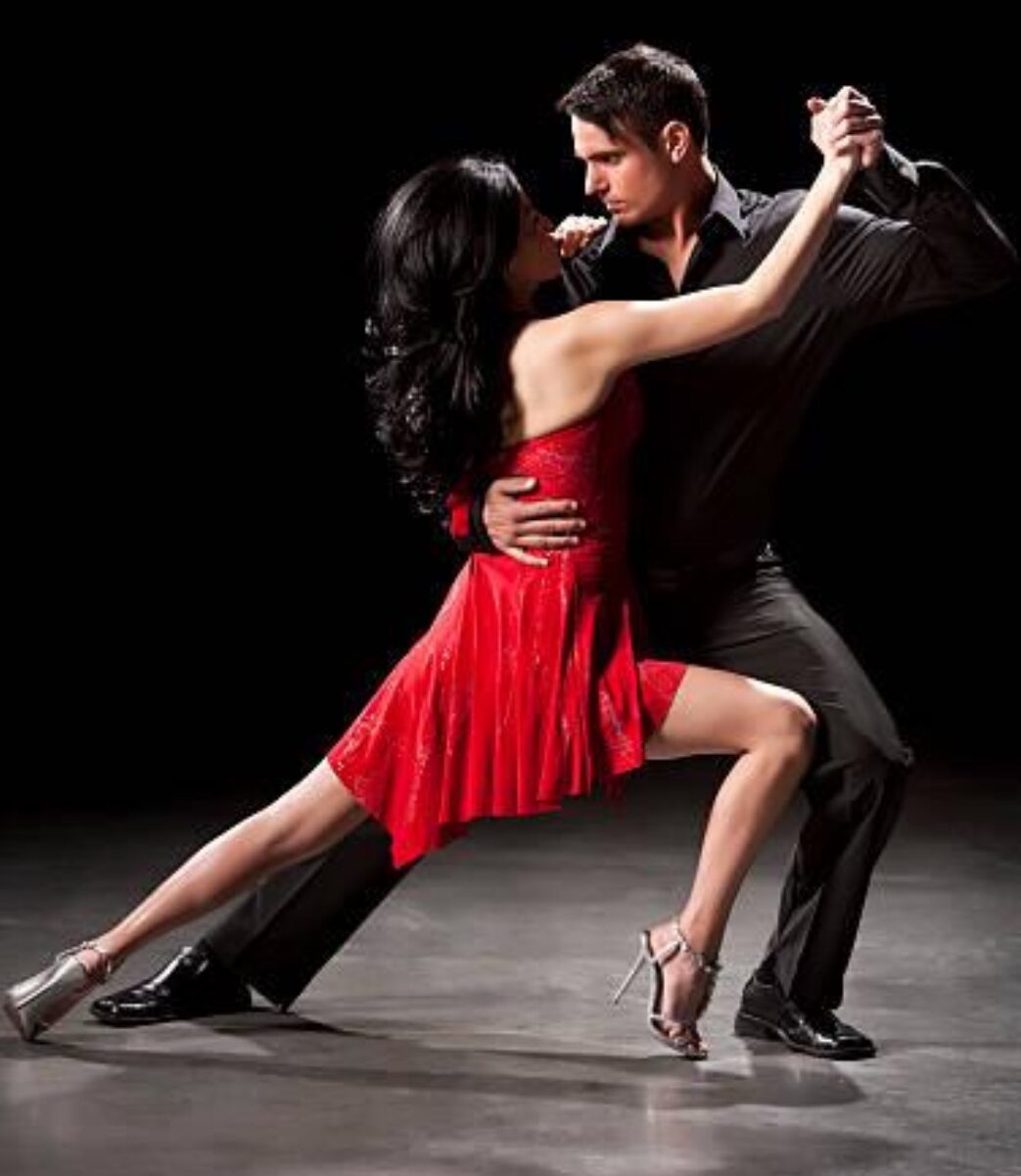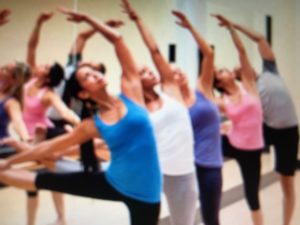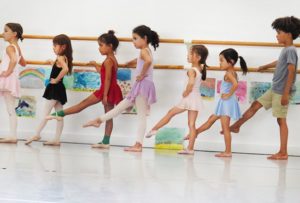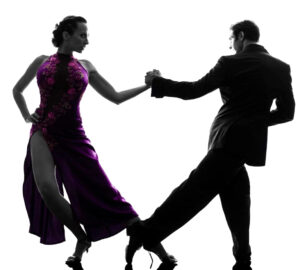Dance Glossary
Ballroom
Ballroom dance refers to a set of partner dances, which are enjoyed both socially and competitively around the world. Because of its performance and entertainment aspects, ballroom dance is also widely enjoyed on stage, film, and television. Ballroom dance may refer, at its widest definition, to almost any type of social dancing as recreation. However, with the emergence of dance competition (now known as Dancesport), two principal schools have emerged and the term is used more narrowly to refer to the dances recognized by those schools.
Techniques of ballroom dancing have developed and highly standardized teaching methods have emerged. The dances themselves are categorized into two main groups: Standard or Ballroom dances, which include dances like the Waltz, Tango, Viennese Waltz, Foxtrot, and Quickstep; and Latin dances, which encompass the Samba, Cha-cha-cha, Rumba, Paso Doble, and Jive. Competitions specify which dances are to be performed to what type of music, and there are also prescribed tempos, rhythms, and techniques.
Waltz
The Waltz is a smooth, progressive dance characterized by long, flowing movements, continuous turns, and “rise and fall” motion. Originating in the 18th-century Europe, the waltz is a staple in both social and competitive ballroom dancing scenes. Performed in 3/4 time, this dance emphasizes a subtle swaying and gliding motion that creates a feeling of elegance and poise.
The waltz is particularly revered for its simplicity and grace. As one of the first dances performed in closed position, where dancers hold each other close, it sparked some controversy for its perceived intimacy during its early history. Today, it remains a favorite among dancers for its timeless appeal and romantic aspect. In ballroom competitions, the waltz is categorized under the Standard or Ballroom dances, where it continues to charm audiences with its fluid movements and expressive compositions.
Salsa
Salsa is a vibrant and energetic Latin dance known for its lively music and intricate footwork. Originating in the Caribbean, particularly from Cuban and Puerto Rican influences in the mid-20th century, salsa has grown into one of the most popular forms of Latin dance worldwide.
Characterized by a fast-paced rhythm, salsa music typically follows a repetitive pattern with an emphasis on percussion and brass instrumentation. The dance itself is marked by quick, rhythmic steps that often include a range of turns, spins, and flourishes. Dancers generally perform in a paired format, utilizing a series of tight, synchronized movements that reflect playful and flirtatious interplay.
Socially, salsa is enjoyed in dance halls, nightclubs, and parties, often encouraging improvisation and social interaction among dancers. In competitive scenes, salsa may be performed with a predetermined choreography that showcases technique, timing, and artistic expression. The dance is accessible to all skill levels, making it a popular choice for those seeking to engage in lively and sociable dance activities.
Tango
Tango is a passionate and dramatic dance known for its expressive movements and deep emotional connections between partners. Originating in the late 19th century in the working-class neighborhoods of Buenos Aires, Argentina, tango has since spread globally, captivating audiences with its complex steps and intense performances.
Characterized by sharp, quick movements and a close embrace, tango dance involves synchronized walking patterns, sudden pauses, and intricate footwork. The music is traditionally played by a sextet, featuring instruments such as the bandoneon, violin, piano, guitar, and double bass, contributing to the dance’s dramatic and melancholic atmosphere.
Tango is both a social dance and a competitive dance sport, enjoyed in various settings from casual social gatherings to formal competitions. Its deep cultural roots and the emotive power of its performance make tango a unique and enduring symbol of Argentine culture.
Foxtrot
Foxtrot is an elegant and sophisticated dance that is part of the Standard or Ballroom category in ballroom dancing. This dance is characterized by its smooth, long, flowing movements and continuous motion across the dance floor. Originating in the early 20th century in the United States, the foxtrot was named after its inventor, vaudeville actor Harry Fox.
Foxtrot is danced to a 4/4 time signature and is known for its simplicity and grace, making it accessible and enjoyable for dancers of all skill levels. The dance combines slow steps and quick steps, creating a varied and rhythmic pattern that is both versatile and rhythmic.
In competitive ballroom dancing, the foxtrot is appreciated for its smoothness and elegance, often requiring a high level of technical skill and control to execute the gliding movements and precise timing beautifully. The foxtrot continues to be a popular choice for both social and competitive dancers for its classic charm and flowing elegance.












